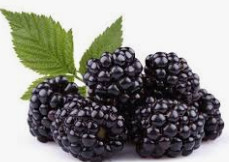Study on Dielectric Properties of Blackberry Based on Microwave Drying

Absrtact: The effects of frequency (1-3 000 MHz), moisture content (20%-80%) and temperature (20-100 C) on relative dielectric constant and dielectric loss factor of BlackBerry were measured and studied by network analyzer. The penetration depth of microwave drying equipment was calculated, and the effects of frequency, moisture content and temperature on BlackBerry were analyzed. The relationship model between electrical parameters and main influencing factors verifies the accuracy and feasibility of predicting water content based on dielectric parameters.
Key words: Blackberry microwave drying; dielectric properties; moisture content; temperature; frequency; penetration depth

Blackberry is a widely distributed and well-known shrub, which belongs to the genus Rubus of Rosaceae. Blackberry, originated in North America, is the third generation of small fruit trees. Its fruit is rich in nutrition, tender and juicy, unique flavor, and rich in essential amino acids and trace elements for human body. Fresh fruit and its series of processed products are very popular with consumers. The Institute of Botany, Chinese Academy of Sciences, Jiangsu Province began the research on introduction and utilization of BlackBerry in 1986. Over the past 20 years, more than 30 varieties of blackberry and raspberry have been introduced from Europe and America.
The ripening period of blackberry fruit is from June to August. The shelf life of blackberry fruit is not long, and it is difficult to transport and store. Therefore, most blackberry fruits need to be dried to prolong shelf life. The traditional drying method is hot air drying. The temperature gradient is opposite to the moisture gradient in the drying process. The more difficult the material moisture evaporates, the longer the drying time, the greater the energy consumption. Microwave drying has attracted more and more attention of food enterprises because of its short drying time, high efficiency and relatively low energy consumption.
In the process of dielectric heating, dielectric properties largely determine the behavior of materials in microwave electric field. In addition, the dielectric properties of materials depend on their composition, etc. Therefore, the dielectric properties can be used to identify the quality factors such as moisture content and freshness. At present, the dielectric properties of food at home and abroad are mainly used in rapid detection, material sterilization and insecticidal, while the dielectric properties of materials related to dielectric drying are scarce.
Dielectric properties characterize the response of bound charges in biological molecules to applied electric fields. The parameters commonly used to evaluate dielectric properties of materials include dielectric constant, conductivity, dielectric loss factor, tangent of loss angle, equivalent impedance, resistance conductance and capacitance, etc.
This paper mainly studies and analyses dielectric constant, dielectric loss factor and energy penetration depth. Dielectric constant is the inherent physical property of dielectric material, which reflects the ability of material to store electric energy, while dielectric loss factor reflects the ability of food to consume energy in electromagnetic field.